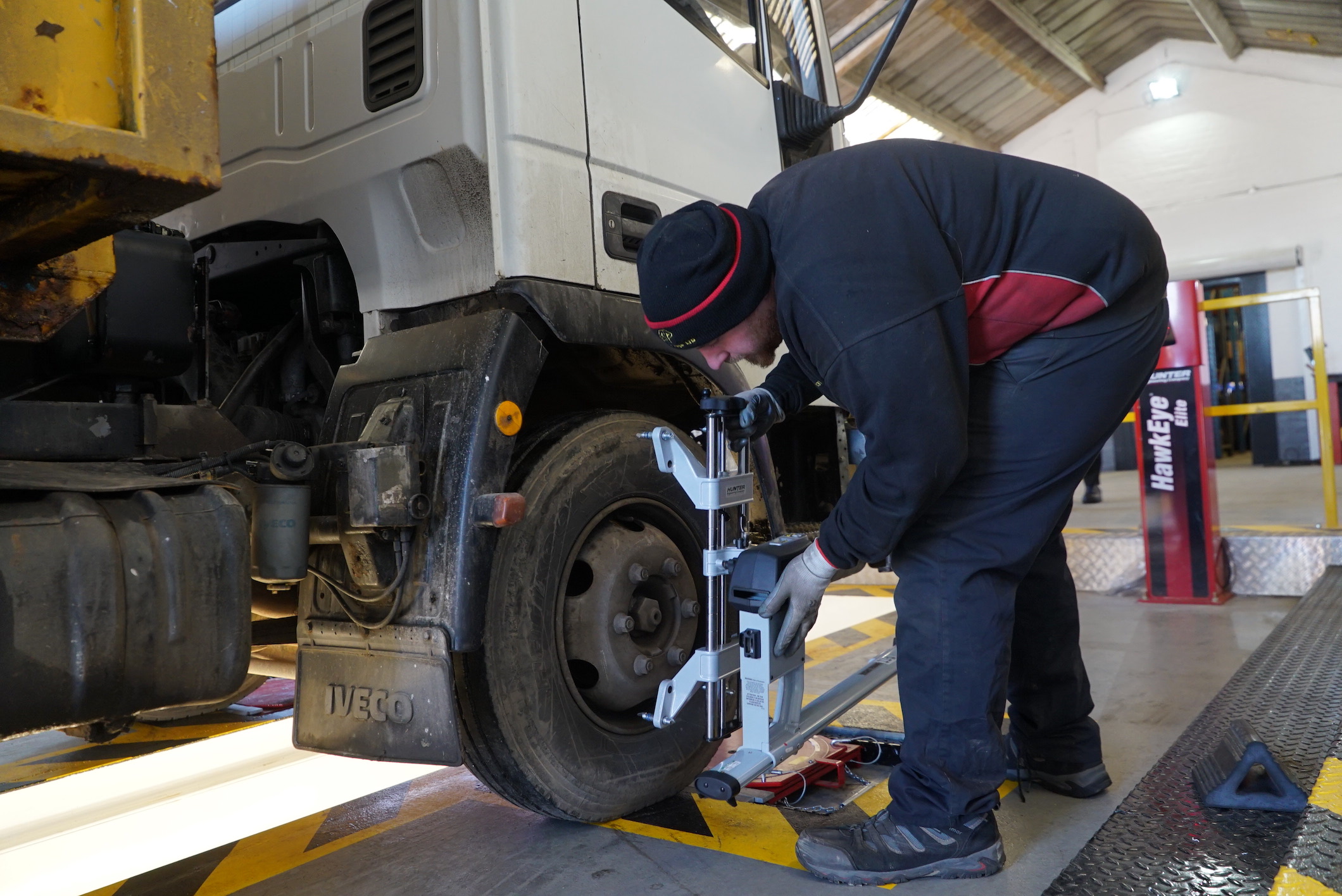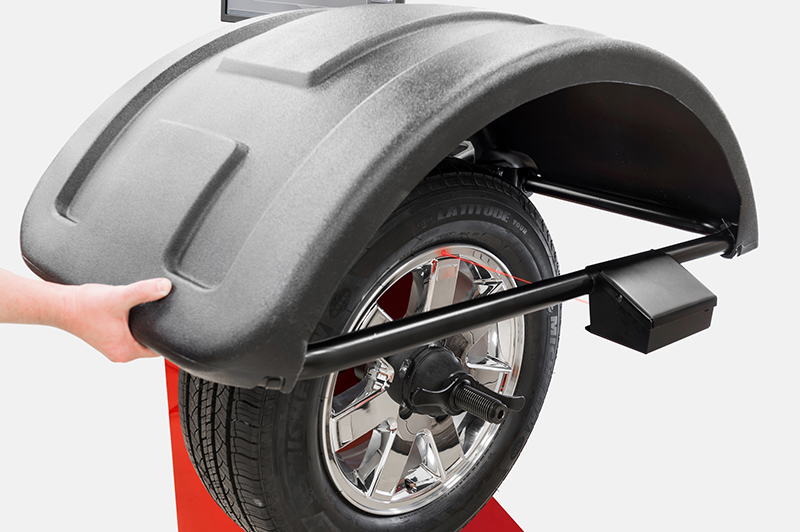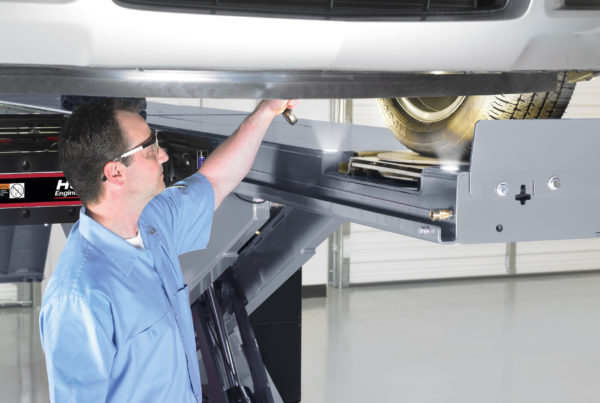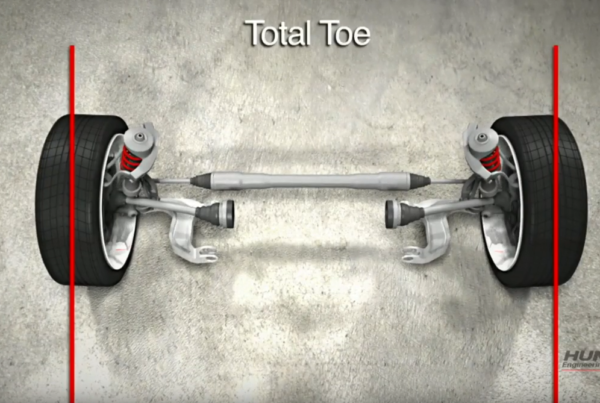Wheel balancing and alignments are both important parts of ensuring optimal performance from your vehicle, but the two services are vastly different. A tyre balance corrects weight imbalances on tyre and wheel assemblies, while an alignment corrects tyre angles to ensure optimal contact with the road.
What is wheel balancing?
Wheel balancing is an important part of vehicle maintenance that involves distributing weight equally around the wheel to ensure it rotates smoothly. This is achieved by adding small weights to the rim to counter any weight inconsistencies. The result is a more comfortable ride with minimal vibration felt through the steering wheel.
Why is wheel balancing so important?
Imbalanced wheels can be a major issue for drivers. They can cause your tyres, suspension, and steering components to wear prematurely, and produce a vibration that can lead to unsafe and uncomfortable driving.
To balance your wheels, your tyres, and wheels are mounted onto a tyre balancing machine that spins the assembly to measure the imbalance. This allows a technician to precisely install the correct tyre weights to achieve a properly balanced wheel and tyre assembly.
It’s important to understand that wheel balancing is not the same as wheel alignment. Wheel alignment corrects the angles of the tyres, so that they come into contact with the road in the right way, whilst wheel balancing works on weight distribution.
While modern technology has made it possible to manufacture wheels and tyres with minimal imbalances, there will always be some areas with thicker materials and others that are thinner and lighter.
So, wheel balancing is a crucial service that ensures your car runs smoothly, efficiently and comfortably. Whenever you have your tyres replaced, you should confirm with your technician that they will conduct a wheel balancing service as part of the installation process.
Additionally, regular wheel balancing can help to improve fuel efficiency, reduce tyre noise and increase overall vehicle safety. If you’re experiencing vibrations or your tyres are wearing unevenly, it’s important to get your wheels balanced as soon as possible to avoid any further damage, discomfort, or safety issues. Investing in regular wheel balancing will not only save you money in the long run but will also ensure a safer and more comfortable ride.
How to tell if your wheels need balancing
Vehicle owners should pay serious attention to their tyres. Unbalanced tyres can lead to an uncomfortable and unsafe driving experience.
There are some key signs that you can look out for to determine if your wheels are imbalanced:
Uneven Tyre Wear
Having one side of your tyre wear down faster than the other is a clear indicator of a wheel imbalance, which should be repaired immediately. Some key indicators of tyre wear are scalloping, cupping or feathering on the tyre’s tread.
Steering Wheel Vibration
A vibrating steering wheel, especially at higher speeds, could be a sign that your wheels are imbalanced.
Pulling
Imbalanced wheels can cause your vehicle to pull to one side. This can have dangerous consequences.
It’s important to pay attention to any signs of wheel imbalance. Identifying imbalanced wheels early can help to avoid premature tyre wear, increase vehicle safety and provide a more comfortable driving experience. If you notice any signs of imbalance, it’s best to have your wheels balanced as soon as possible by a professional technician to ensure optimum performance and longevity of your tyres and vehicle.
Wheel balancing key benefits
There are a number of benefits to effective wheel balancing, which include increased vehicle safety, fewer repairs, and improved overall vehicle performance. Here are some of the key advantages of regular wheel balancing:
Improved safety
When your wheels are out of balance, they can cause your vehicle to shake, vibrate or wobble at high speeds. This makes controlling your vehicle difficult, and driving unsafe. Proper wheel balancing ensures that your tyres make even contact with the road, providing a stable and safe driving experience.
Longer tyre life
Unbalanced wheels can cause uneven wear on your tyres, leading to premature wear and tear, which can shorten their lifespan. Balancing your wheels regularly helps save you money in the long run by extending the lifespan of your tyres.
Better fuel economy
When your wheels are not balanced, your vehicle’s engine has to work harder to gain and maintain speed, resulting in decreased fuel efficiency. Proper wheel balancing helps to reduce resistance and improve fuel economy.
Smoother ride
Balancing your wheels helps to eliminate vibrations and provide a smoother ride, which can improve your driving experience and reduce driver fatigue.
Wheel balancing is a simple and low-cost way to ensure your vehicle operates safely and efficiently. Regular maintenance of your wheels can extend your tyre’s life, reduce fuel consumption, and provide a more comfortable ride. Investing in wheel balancing can save you money on future repairs and help you avoid potential safety hazards on the road.
What is wheel alignment?
Wheel alignment is an essential vehicle maintenance task that is often overlooked. Wheel alignments involve checking the direction and angle of your wheels and ensuring they are parallel to each other and in-line with the ground. The three primary alignment angles that need to be adjusted are camber, caster, and toe.
Camber
Camber refers to the angle of the wheel when viewed from the front of the vehicle. If the wheel leans too much to the side in either direction, the vehicle is said to have misaligned camber.
Caster
Caster is the angle of the steering pivot when viewed from the side of the vehicle, and it can be difficult to notice when it is off. One way to tell if your caster alignment is incorrect is if one of your wheels is too far forward or back in your wheel well, leading to rubbing along the well if you go over a large bump.
Toe
Toe is the angle of your tyres in relation to one another and is the most common form of misalignment. If your car pulls to one direction or refuses to drive in a straight line, it is likely that you have at least one wheel with toe misalignment.
Wheel alignment ensures that your car does not veer to the right or left and improves handling by stopping on-the-road vibrations. It’s not an adjustment of the tyres or wheels themselves, but the suspension system that connects a vehicle to its wheels.
Wheel alignment is an essential part of vehicle maintenance. It ensures your vehicle runs at peak performance and remains safe to use.
How to tell if your wheels need aligning
Having properly aligned wheels is an important part of maintaining your vehicle’s performance and safety. However, spotting misaligned wheels can be difficult, as the signs are often subtle. Here are some key indicators to look out for:
Uneven Tyre Wear
Uneven tyre wear, especially on the outer edges, is a sign of misalignment. Misaligned wheels will cause tyres to wear down unevenly and quickly, which can be dangerous and expensive to fix.
Vehicle Pulling
If your vehicle pulls to one side, either while driving or braking, your wheels may be misaligned.
Vibrations in the Steering Wheel
Steering wheel vibrations while driving, particularly at higher speeds, indicate a problem with the wheel alignment.
Crooked Steering Wheel
If your steering wheel is not centred or is crooked when you are driving straight, it could be an indication of misaligned wheels.
If you notice any of these signs, it’s vital to have a professional technician check your vehicle’s alignment. Regular alignment checks can help extend the life of your tyres, improve handling, and prevent potential safety hazards while driving.
Wheel alignment key benefits
There are a number of benefits of having your wheels aligned, including better handling, longer tyre life, increased fuel efficiency and more. Here are the key benefits of wheel alignments:
Improved Handling
Proper wheel alignment ensures your vehicle handles as it should, providing a smooth and comfortable driving experience. Better handling is particularly important for long distance driving.
Longer Tyre Life
Misaligned wheels can cause uneven tyre wear, leading to premature wear and tear. Having your wheels aligned regularly reduces wear and tear, extending the life of your tyres and saving money in the long run.
Better Fuel Efficiency
When your wheels are misaligned your vehicle has to work harder to do its job, reducing your fuel efficiency. Proper alignment can improve your fuel mileage, reducing your costs over time.
Increased Safety
Proper alignment ensures your vehicle is stable and predictable on the road, reducing the risk of accidents. This equally helps you maintain better control of the vehicle in emergency situations.
Reduced Maintenance Costs
Regular alignment checks can identify any issues with your suspension system or other components that may need repairs. Addressing these issues early on can prevent more significant and costly repairs down the line.
Regular wheel alignments are an essential aspect of vehicle maintenance, providing numerous benefits for your safety, comfort, and wallet. Ensure you get your vehicle’s alignment checked regularly by a professional technician to enjoy these benefits.
Frequently Asked Questions
How much does wheel balancing cost?
The cost of wheel balancing varies from garage to garage. However, the average price range for wheel balancing in the UK is around £5-£15 per tyre.
How much does wheel alignment cost?
Wheel alignment pricing varies depending on the garage, how many wheels you have and your vehicle type. In the UK you can expect to pay from £40-£100 for a proper wheel alignment.
How often should you get your wheels balanced?
Experts recommend getting your wheels balanced every 7000 miles. This will help ensure you get the best performance from your vehicle.
How often should you get your wheels aligned?
It’s recommended that you have your wheels aligned every 1–2 years to ensure optimal performance and safety.







